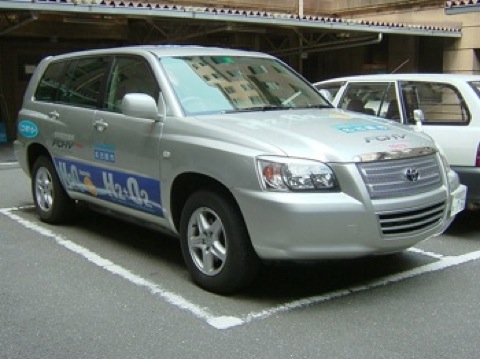CAFE Convergence
3 Jun, 2009 01:36 pm
On May 19, President Obama announced a comprehensive framework for vehicle fuel economy and greenhouse gas emissions. While I'm not sure I'd go quite as far as one Congressman, who compared it to solving the "energy and economic policy equivalent of a Rubik's Cube", this represents an important step for reducing our oil imports and improving our energy security. At the same time, the corporate average fuel economy standard (CAFE) remains more of a goal and tracking system than a mandate with sharp teeth.
 |
The most important question to ask about a change of this magnitude is whether it can be accomplished in the required timeframe. In this case, the answer appears straightforward: 35.5 mpg and the accompanying emissions standard of 250 grams of CO2 per mile in 2016 are very close to the 160 g/km average that the European car industry meets today. Of course, it does so with a very different mix of cars from that sold here, with very few trucks and large SUVs. Our new 39 mpg passenger car target equates to around 142 g/km--equal to the current performance of the most efficient European brands, Fiat and Peugeot/Citroen. Europe is also helped greatly by the fact that half the cars sold there are diesels, which get around 1/3 better fuel economy than conventional gasoline cars. As keen as I am on them, I have a hard time imagining that half our new cars will be diesels in seven years--or hybrids, for that matter, considering that hybrids made up less than 3% of our mix last year. Many other technologies can help boost fuel economy, including gasoline direct injection, more energy-efficient transmissions, and more extensive use of turbocharging, a strategy that was widely employed here the first time the CAFE standards started to bite, in the 1980s. All of this costs money, and the US car industry, which stood shoulder-to-shoulder with the President yesterday, estimated an extra $600 per car from this rule, on top of $700 per car from changes already in the works. It's those costs that lead to a more objective assessment of yesterday's announcement.
To gauge the change in CAFE standards as energy or environmental policy, we must know our starting point, the status quo ante. According to the NHTSA CAFE database, the 2008 model year US new car fleet averaged 27 mpg. Compared to that, the average car would save around 890 gallons of gas under the new 2016 standard over 100,000 miles of use. At $1300 per car that works out to $1.46 per avoided gallon on an undiscounted basis. That looks pretty good from a consumer perspective. When expressed in barrels, at $61 it is less of a bargain but still compares favorably with the $79/bbl at which oil futures for 2016 were trading yesterday, though I hasten to remind my readers that futures prices shouldn't be construed as a forecast. After factoring in the likelihood that many cars will last longer than 100,000 miles, the cost trade-off looks even better.
Unfortunately, the news isn't quite as good in emissions terms, because of the thermodynamics of engines and CO2, for which there is most definitely no free lunch. Each gallon of gasoline saved spares just under 20 lb. of CO2 emissions at the tailpipe. That means that our $1300 per vehicle premium versus the status quo is effectively purchasing 8.9 tons of CO2 reductions. That works out to $146/ton, or about ten times the price of emissions permits that the administration and Congress have told us to expect in the same timeframe. Even if you only count the $600 estimated to be directly attributable to yesterday's announcement, the resulting $67/ton of CO2 still makes this a pretty expensive way to reduce emissions.
There's an asterisk on this assessment, however, related to enforcement. I haven't seen any details of what is being proposed in that department, but unless the system of fines in the current CAFE standard is overhauled, too, the cost of missing the target would remain pretty small. When I looked at this last year, it worked out to around $55 per car for each mpg over the annual goal. That adds up when spread out over hundreds of thousands or millions of vehicles, but it could still be lost in the rounding for an industry that even in this depressed year will sell on the order of $250 billion worth of product.
All in all, I regard the new CAFE standard as a positive development, although it doesn't stand on its own. The specifics of how it will be enforced will ultimately determine its success in altering the car-buying habits of Americans. At the same time, it's worth noting that future increments of fuel economy beyond 35.5 mpg will cost much more and save many fewer actual gallons, because of diminishing returns. The same European car industry that has demonstrated that our new standard can be met has estimated that the cost of going from their present level of 160 g/km to the EU's 120 g/km standard--equivalent to 46 mpg--would likely increase vehicle sticker prices by approximately $4,900 per car. When translated into dollars per barrel of oil saved or per ton of CO2 avoided, that looks prohibitively high. The implication is that yesterday's move on CAFE should be our last tweak to fuel economy standards until technology has changed dramatically.
Originally published on Energy Outlook







 Read more
Read more
There's a legimate debate over EVs, plug-in hybrids, fuel cells, and various advanced ICEs, but "self-powered cars" aren't in prospect. So let's get real, shall we?
If the government can't live within the mandates, then no one else should have to.